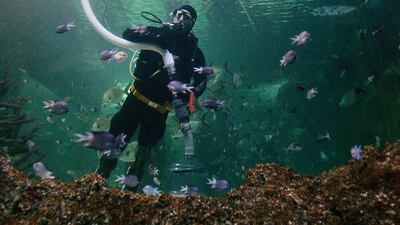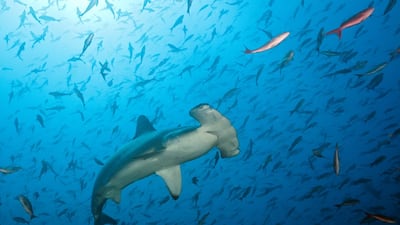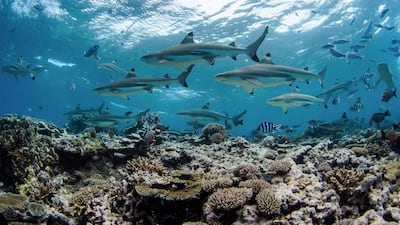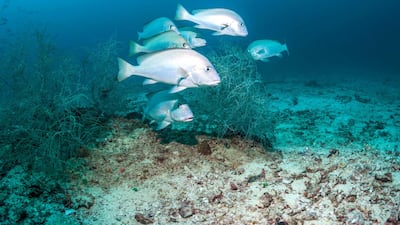Rapid and irresponsible construction risks harming biodiversity across the UAE, a new report has warned.
Reptiles, insects and mammals are among the wildlife under threat in the Emirates due to large-scale development projects.
The warning comes as separate research released this week found urbanisation, overfishing and climate change were rapidly increasing the numbers of species becoming extinct worldwide.
Experts said the Earth was facing its “sixth mass extinction” of the past half-billion years – and the first caused by human activity.
"The main threat [in the UAE] is to the invertebrates and smaller vertebrates, which have not benefited from specific conservation programmes," said Johannes Els, who co-authored a report published in the American journal PLOS One, which studied land reptiles in the Emirates.
“Species like gazelles and oryxes have increased in size through conservation areas.”
On Monday, a study released by the Intergovernmental Science-Policy Platform on Biodiversity and Ecosystem Services (IBPES), described the health of the world’s ecosystems as “deteriorating more rapidly than ever”.
Sir Robert Watson, IBPES’s chairman, said the overall picture of the natural world was “ominous” and that only a “transformative change” could address the decline.
“By transformative change, we mean a fundamental, system-wide reorganisation across technological, economic and social factors,” said Sir Robert.
While the report’s overall conclusions are stark, experts did highlight some conservation successes, including efforts that have helped bring the Arabian Oryx back from the brink of extinction.
The animal is among half a dozen hoofed animals that would likely have become extinct or be restricted to captivity without effective conservation efforts.
Along with other countries in the region, the UAE has been active in conserving the Arabian Oryx though captive breeding programmes and then releasing newborns into protected areas.
Based on an assessment of thousands of records, the UAE study looked at the prospects for 60 reptile species found in the Emirates.
While many common reptiles are found in protected areas - which cover 16.6 percent of the UAE’s land surface - two out of the UAE’s three “critically endangered” reptiles only exist outside these zones, leading the report’s authors to recommend these areas be reassessed.
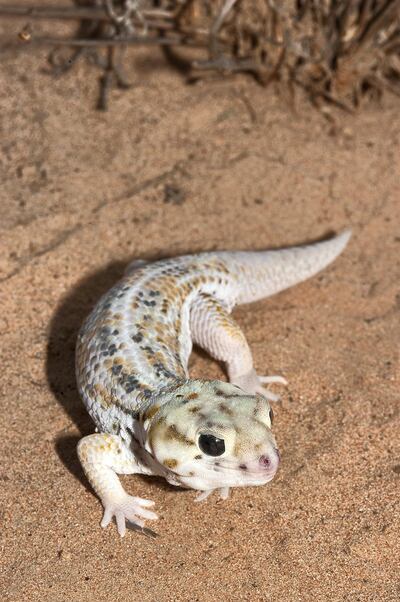
“Development in the form of housing and urban areas is the biggest threat, followed by human disturbance through recreation,” said Mr Els, head of the department of herpetology and freshwater fish at the Breeding Centre for Endangered Arabian Wildlife in Sharjah.
He added that recreational pursuits including driving through sand dunes - known as ‘dune bashing’ - could impact colonies of spiny-tailed lizards.
But he said efforts to conserve reptiles could be much cheaper than measures needed to protect larger mammal species as they typically involved protecting habitat rather than expensive captive-breeding work.
Among the most important conservation priorities is the Emirati leaf-toed gecko (Asaccus caudivolvulus), the only vertebrate species endemic to the UAE.
This species is classified by the International Union for Conservation of Nature as critically endangered, but is not found in any protected areas in the UAE.
Another of the report’s authors, Prof Salvador Carranza, from the Institute of Evolutionary Biology in Barcelona, said there were some positive developments underway in the Emirates.
_____________
Endangered and vulnerable fish species in the Gulf, in pictures:
_____________
He gave a conservation plan for another gecko, the Keyserling's Wonder Gecko (Teratoscincus keyserlingii), as an example. Its protection is being helped through a project financed by The Mohamed Bin Zayed Species Conservation Fund.
“It’s an initiative that shows there’s interest in protecting this species,” said Prof Carranza.
“It’s a nocturnal gecko that needs particular sand dune environments. When habitats are disturbed, they disappear.”
While not threatened globally, the UAE is the only place in the Arabian Peninsula where it is found, and it has become critically endangered here because of development.
Insect species too are thought to have suffered population declines, among them the Arabian longhorn beetle (Anthracocentrus arabicus).

























